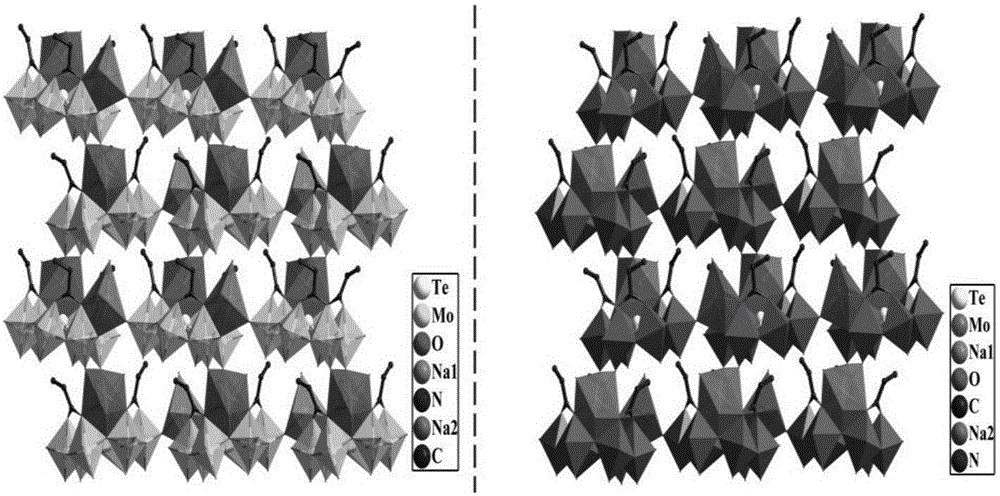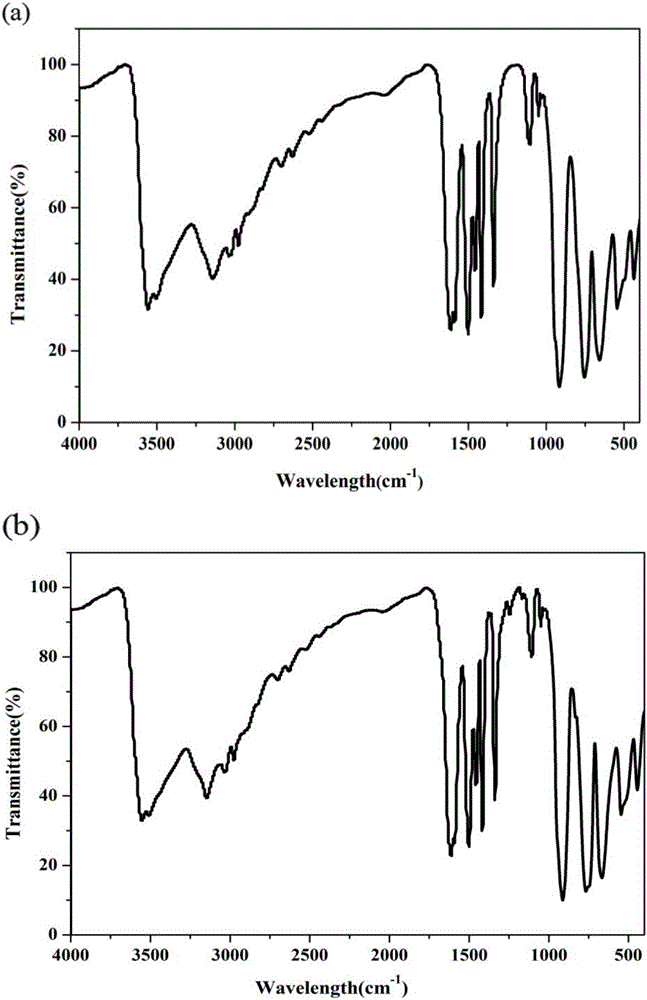Chiral heteropolymolybdate, preparation method and non-linear optical applications thereof
A molybdate and heteropoly technology, applied in the field of chiral heteropoly molybdate, can solve the problems of high synthesis cost, low efficiency, difficult to break, etc., and achieves low raw material cost, clear structure, safe and simple operation. Effect
- Summary
- Abstract
- Description
- Claims
- Application Information
AI Technical Summary
Problems solved by technology
Method used
Image
Examples
Embodiment 1
[0030] The preparation of embodiment 1 chiral heteropolymolybdate comprises the following steps:
[0031] 1.235g sodium molybdate, 0.110g Na 2 TeO 3 Dissolve 0.113g of glycine in 20ml of water and stir, and adjust the pH to 3.5 with 4mol / L HCl, then add 0.176g of sodium chloride, continue to stir at room temperature for one hour, and then take a water bath at 80°C for one hour, filter after cooling, and place it for one month. to obtain the desired compound.
[0032] 1.235g sodium molybdate, 0.055g SeO 2 Dissolve 0.113g of glycine in 20ml of water and stir, and adjust the pH to 3.5 with 4mol / L HCl, then add 0.176g of sodium chloride, continue to stir at room temperature for one hour, and then take a water bath at 80°C for one hour, filter after cooling, and place it for one month. to obtain the desired compound.
Embodiment 2
[0033] The preparation of embodiment 2 chiral heteropolymolybdates comprises the following steps:
[0034] 1.235g sodium molybdate, 0.110g Na 2 TeO 3 Dissolve 0.113g of glycine in 20ml of water and stir, and adjust the pH to 3.5 with 4mol / L HCl, then add 0.147g of sodium chloride, continue to stir at room temperature for one hour, then take a water bath at 80°C for one hour, filter after cooling, and place it for one month. to obtain the desired compound.
[0035] 1.235g sodium molybdate, 0.055g SeO 2 Dissolve 0.113g of glycine in 20ml of water and stir, and adjust the pH to 3.5 with 4mol / L HCl, then add 0.147g of sodium chloride, continue to stir at room temperature for one hour, then take a water bath at 80°C for one hour, filter after cooling, and place it for one month. to obtain the desired compound.
Embodiment 3
[0036] The preparation of embodiment 3 chiral heteropolymolybdates comprises the following steps:
[0037] 1.235g sodium molybdate, 0.110g Na 2 TeO 3 Dissolve 0.113g of glycine in 15ml of water and stir, and adjust the pH to 3.5 with 4mol / L HCl, then add 0.176g of sodium chloride, continue to stir at room temperature for one hour, then take a water bath at 80°C for one hour, filter after cooling, and place it for one month. to obtain the desired compound.
[0038] 1.235g sodium molybdate, 0.055g SeO 2 Dissolve 0.113g of glycine in 15ml of water and stir, and adjust the pH to 3.5 with 4mol / L HCl, then add 0.176g of sodium chloride, continue to stir at room temperature for one hour, then take a water bath at 80°C for one hour, filter after cooling, and place it for one month. to obtain the desired compound.
PUM
 Login to View More
Login to View More Abstract
Description
Claims
Application Information
 Login to View More
Login to View More - R&D
- Intellectual Property
- Life Sciences
- Materials
- Tech Scout
- Unparalleled Data Quality
- Higher Quality Content
- 60% Fewer Hallucinations
Browse by: Latest US Patents, China's latest patents, Technical Efficacy Thesaurus, Application Domain, Technology Topic, Popular Technical Reports.
© 2025 PatSnap. All rights reserved.Legal|Privacy policy|Modern Slavery Act Transparency Statement|Sitemap|About US| Contact US: help@patsnap.com



